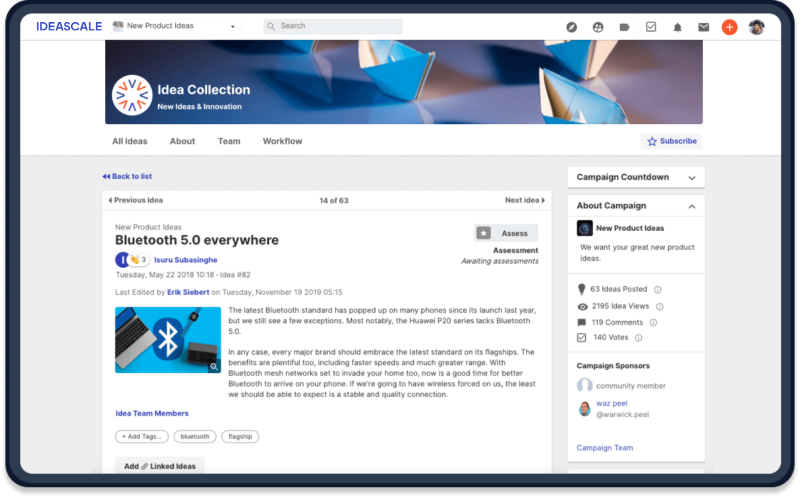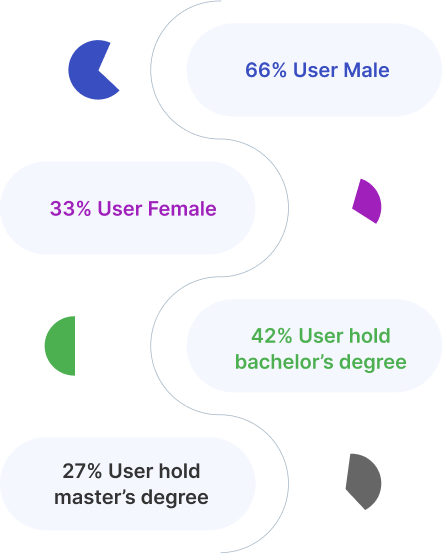The hardest aspect of crowdsourcing is sourcing the right crowd and sustaining the volume and activity of that crowd. With IdeaScale crowd’s crowdsourcing ideas platform, we’ve brought the crowd to you so that you can launch a challenge and solve a problem with the help of a curated group of 30,000 problem-solvers, design thinkers, and ideators.
Challenges with a traditional crowdsourcing platform:
- Brand image and reputation linked to program success
- Difficulty managing crowd behavior
- Not enough time to communicate with participants
- Initial activity slowing down
- Unable to communicate with crowd throughout challenge

IdeaScale Crowdsourcing Platform
Looking for a powerful solution to tap into the collective intelligence of a large group of people? Look no further than our crowdsourcing platform. Our crowdsourcing solution enables you to quickly and easily launch crowdsourcing campaigns, gathering ideas, feedback, and insights from a diverse community of participants. Whether you’re looking for innovative solutions to complex problems, or simply need to validate your ideas, our crowdsourcing platform has got you covered.
Community Demographics
- 36% of the ideators in IdeaScale Crowd are between the ages of 25-34 and 28% between 35-44, with 66% being male and 33% being female. 42% hold a bachelor’s degree, while 27% have a master’s degree.
- 58% are employed full-time, and 15% are self-employed, with 54% working in the private sector and 26% working in the public sector.
- Their occupations span business/financial operations, education/training, computer/IT, arts/design/media. 27% are in upper management, 15% are trained professionals, and 10% are in a self-employed/partner role.
- Our crowd’s top areas of expertise cover everything from branding, marketing/communications, education/teaching, IT, architecture/engineering, writing/editing, food, health and wellness, and community outreach/volunteering.
- Top campaign interests among our crowd include product development, design, branding, entrepreneurship, food, science & technology, social issues, and startups.

Our Customers





